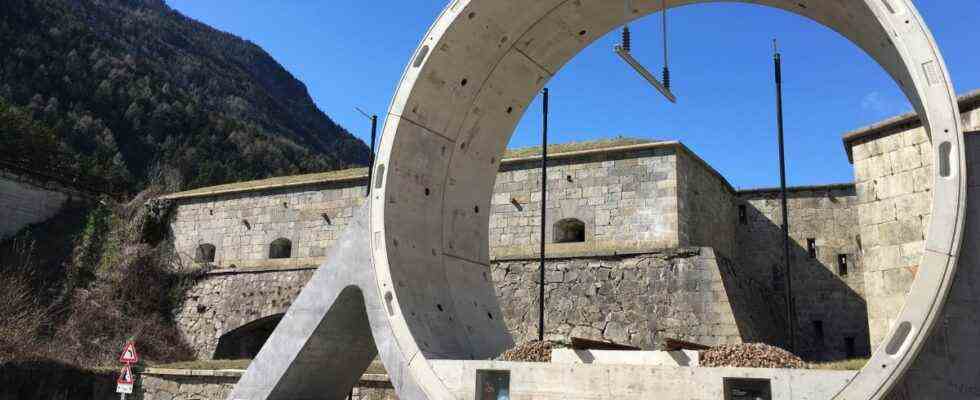The project planners at Deutsche Bahn reacted with incomprehension to the boycott of the most recent dialogue forum by several representatives from the Ebersberg district. In an open letter, politicians, members of citizens’ initiatives and those responsible for the farmers’ association accused the rail company of not making any compromises when planning the expansion route for the northern access to the Brenner Pass in the southern district and leaving questions unanswered. The railway has now responded to the letter from Ebersberg with a comprehensive catalog of answers, which is intended to serve as the basis for further talks between the parties. Here are the most important answers from DB Netz AG on the major project.
Is it correct that due to dynamic driving processes such as acceleration and braking distances, the line speed between Grafing and Kufstein cannot be 230 kilometers per hour everywhere?
DB Netz AG: The only exception to the speed specification is the integration of the new line into the existing line north of Grafing. Only in this area, where trains accelerate and brake, can the speed be lower than 230 kilometers per hour. Outside this area, the route between Grafing and Kufstein is planned for a maximum line speed of 230 kilometers per hour.
Which trains should run on a new line?
The new line is designed as a high-speed line with gentle gradients for mixed traffic. The operating program envisages that around 80 percent of the trains on the new line will be used for freight traffic, around 20 percent will be long-distance passenger trains. Local traffic and a few freight trains will then remain on the existing route. In the future, the majority of freight traffic will be driven on the new route outside of the built-up areas.
When will a decision be made on the existing route drafts?
The four main routes are currently being planned in detail. The costs are determined for each route, and then the list of criteria is applied. The routes are compared with the help of the catalog of criteria. This results in the selection route. We currently assume that we will be able to present the result in the first half of 2022.
Recently there have been repeated demonstrations in the southern district against a new line. Opponents are instead demanding that the existing route be expanded.
(Photo: Peter Hinz-Rosin)
Why isn’t every capacity and possibility on and next to existing tracks first checked in detail before other routes are proposed?
Basically, all possible variants in the planning area have to be checked for such infrastructure projects. The technical feasibility, the ability to be approved and the ability to achieve the traffic goals are also part of this test. In this context, solutions for a new line alongside the existing tracks were also examined.
What is the basis for the statement that “expansion of the existing line is technically not possible”?
When planning began, the entire planning area was examined intensively. The spatial analysis carried out shows that there are very high spatial resistances in the form of settlements and particularly protected natural areas along the existing route. For these reasons, the route would be associated with considerable burdens on people and nature and is therefore not a viable solution.
What specifications from the client would be necessary in order to be able to implement an existing variant?
In its session on December 2, 2016, the German Bundestag passed the expansion laws for the Federal Transport Infrastructure Plan 2030. A change in the task from planning a double-track new line to planning an upgraded line would require a change in the description of the measures in the requirements plan. After the requirements plan review has been completed, the Federal Ministry for Digital Affairs and Transport will inform the German Bundestag about the results. The German Bundestag will then decide on any next steps on this basis. Furthermore, the plans must comply with the applicable laws and guidelines. DB can only plan within the framework of these specifications.
Can the course of the existing road be changed?
A change in the course of the existing route to a locally limited extent can be considered in the route development, taking into account constraint points. A complete or large-scale relocation of the existing route to combine it with one of the main routes presented would not be a viable solution due to the required connection to the stations, the additional infrastructure and the additional land use, as well as for reasons of economy.
According to the current planning status of a route that is close to the existing one, eleven properties at the Aßling train station will be completely cut off from the route. Is it ensured that there is an acceptable alternative solution for this?
All existing path connections are restored. The first proposed solutions are already part of the in-depth planning that is currently being drawn up and are included in the route selection process.
Another property is located directly south of the Aßling train station. Does this property have to be removed and is it ensured that there is an acceptable solution for these people?
According to the current status of the planning, it is not apparent that the residential development will have to give way to one of the four main routes.
Will the existing S-Bahn tracks also be used for the northern approach to the Brenner?
The project does not envisage the use of the S-Bahn tracks for long-distance or freight traffic. The premise for the planning of the northern access to the Brenner is that the current S-Bahn traffic and its future development must not be impaired.

